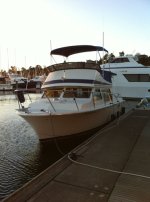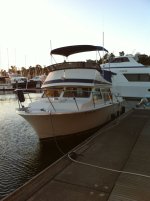Ok so what I need is: new intake, LC Q pistons, Vortec Heads, New cam, New Crank, machine my block for new crank. It almost sounds like I could sell my long block and buy a 383 long block for around $3,500 and switch over all my accessories. I would just have to make sure the engine builder used the correct pistons. Building an engine has always been a dream of mine but I would just hate to screw it up and have the thing blow up. The other thing I'm hearing since I've been doing research is that Malibu has had problems with their 383's in the new boats. They say the 383 doesn't like low rpm's. Some guys have had to replace the engine with under 500 hrs on it. Thoughts?
Home
Outboard Motor Parts
Chrysler outboard parts Evinrude outboard parts Force outboard parts Honda outboard parts Johnson outboard parts Mariner outboard parts Mercury outboard parts Suzuki outboard parts Tohatsu outboard parts Yamaha outboard partsInboard & Sterndrive Engine Parts
Chrysler Marine inboard parts Crusader Marine parts MerCruiser sterndrive parts OMC sterndrive parts Pleasurecraft Marine parts Volvo Penta marine parts + MoreAll Engine Brands
All Manuals HomeOutboard Repair Manuals
Chrysler outboard manuals Evinrude outboard manuals Force outboard manuals Honda outboard manuals Johnson outboard manuals Mariner outboard manualsMercury outboard manuals Nissan outboard manuals Suzuki outboard manuals Tohatsu outboard manuals Yamaha outboard manuals
Inboard & Sterndrive Engine Manuals
MerCruiser sterndrive manuals OMC sterndrive manuals Volvo Penta marine engine manualsPlease Note
MarineEngine.com does not offer troubleshooting assistance or repair advice by email or by telephone.
You are invited to join our public Boat Repair Forum to seek assistance from other members.
You may also visit the Boat Motor Manuals section of our site to obtain a service manual.




